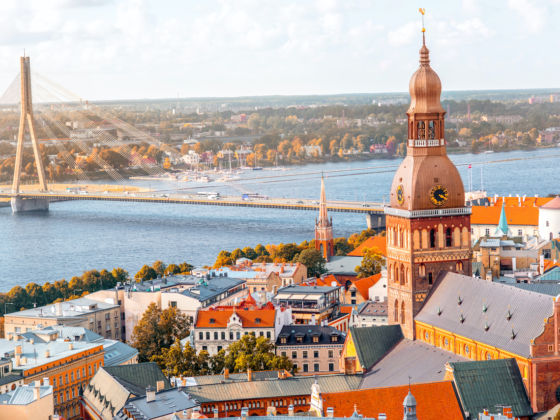“The Baltic States and Poland are doomed. They will be wiped out. Nothing will remain there.”
— Vladimir Zhirinovsky, Deputy Speaker of the Lower House of Russia’s Parliament, in an August 11, 2014 speech.
On my way from the Riga airport to the city’s heavily touristed Old Town, I passed a car with two bumper stickers, one with Russia’s red, white, and blue flag and another which said “Fuck Fuel Economy.”
